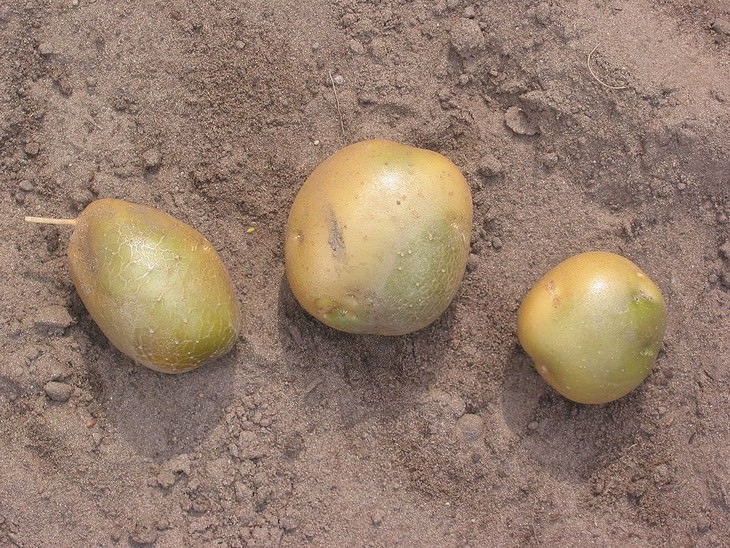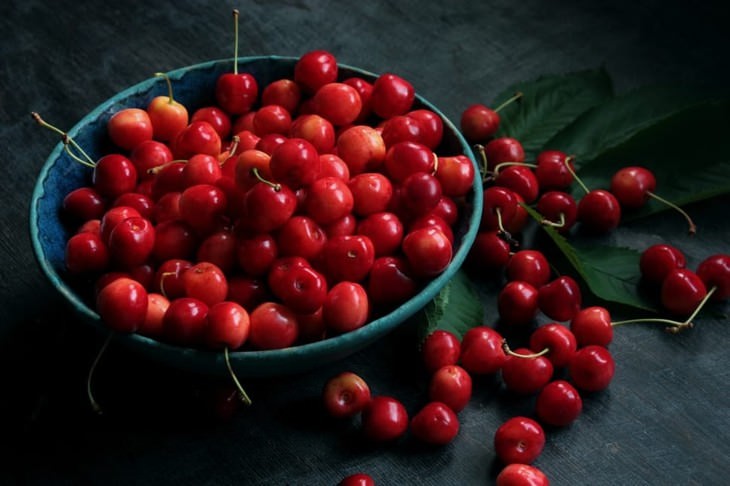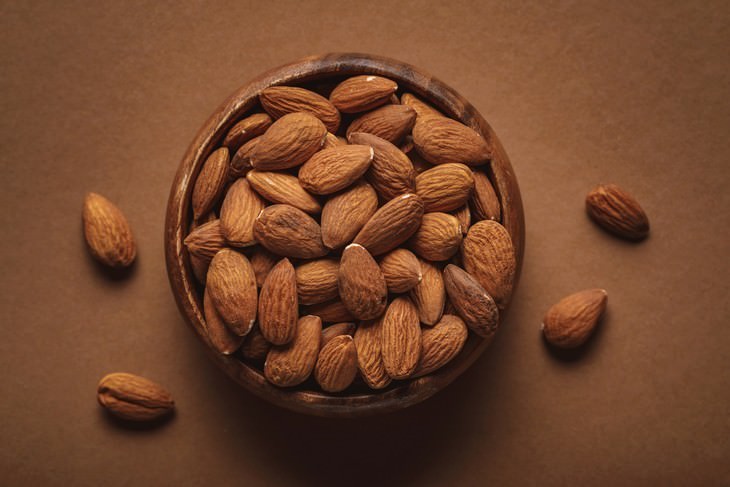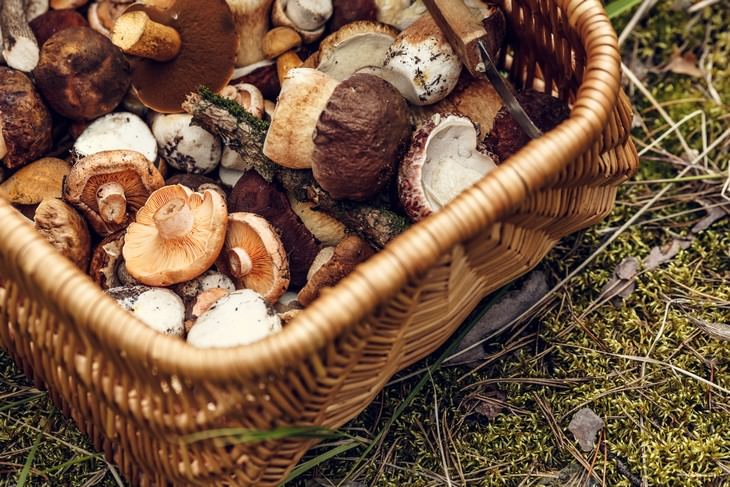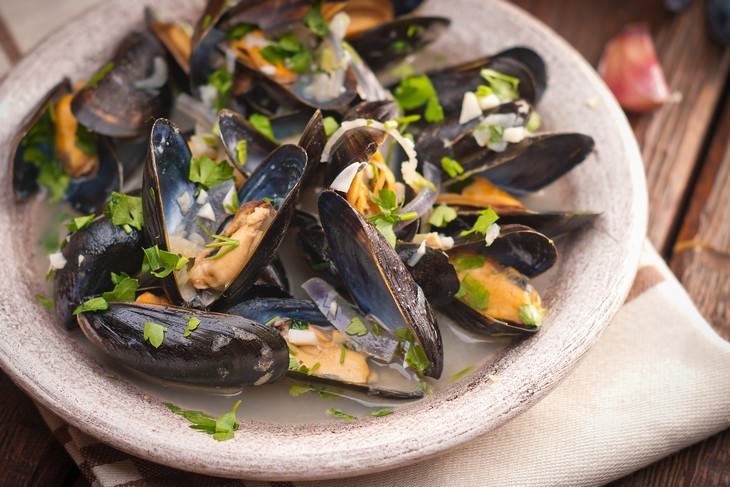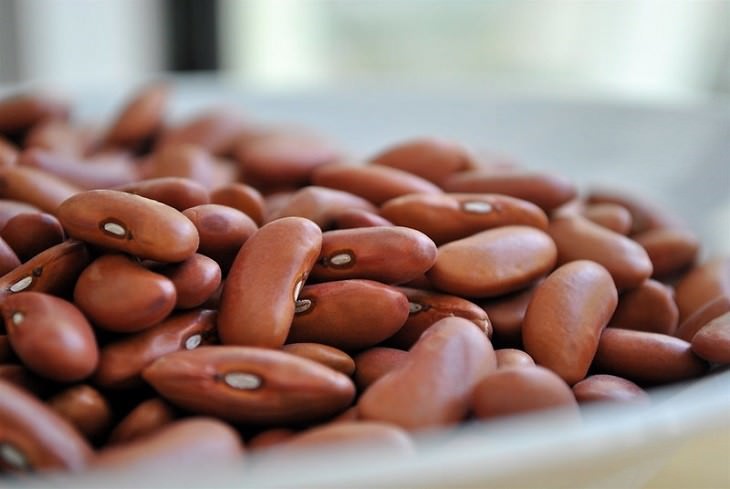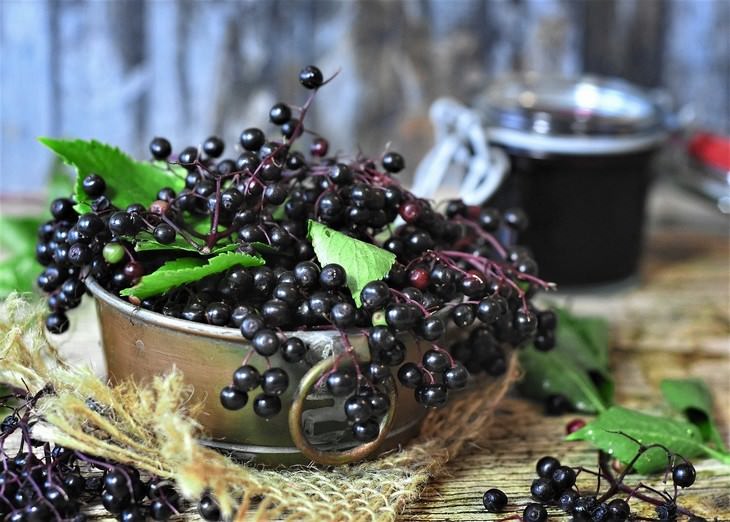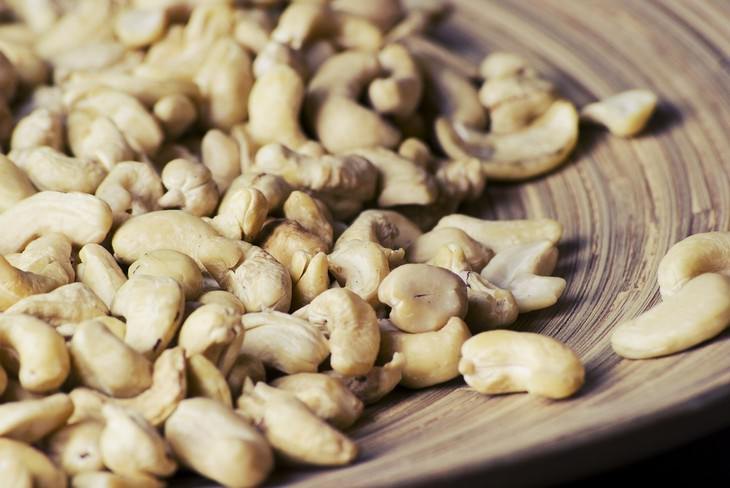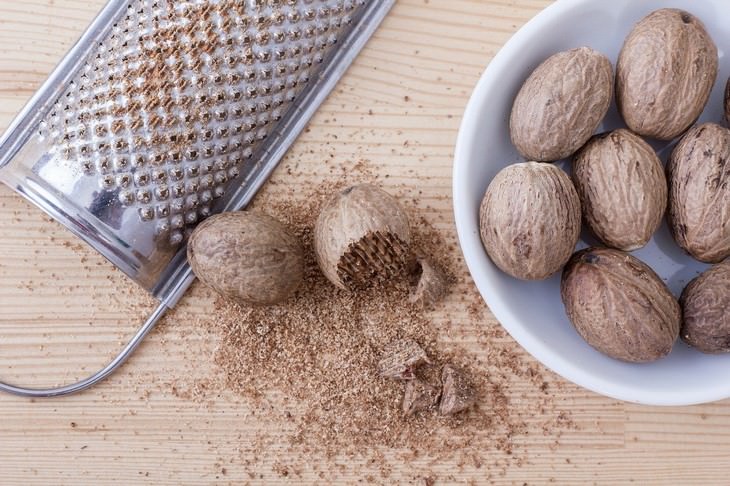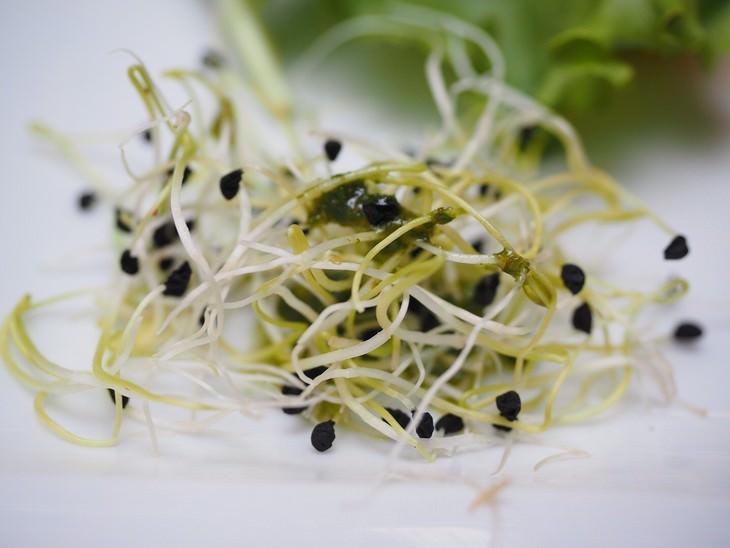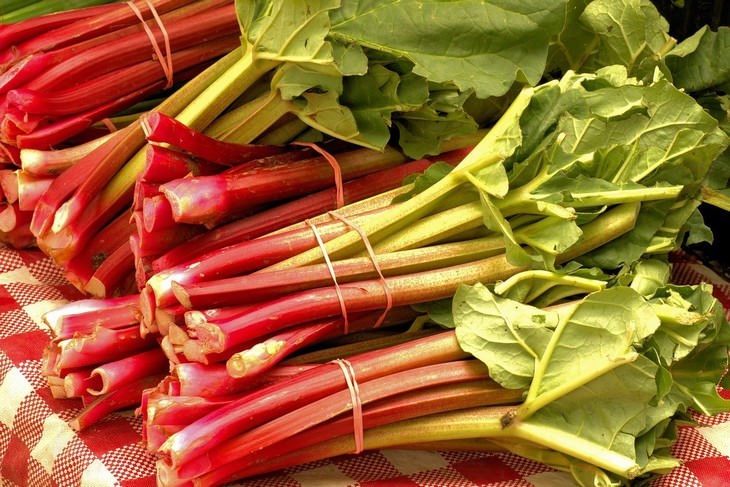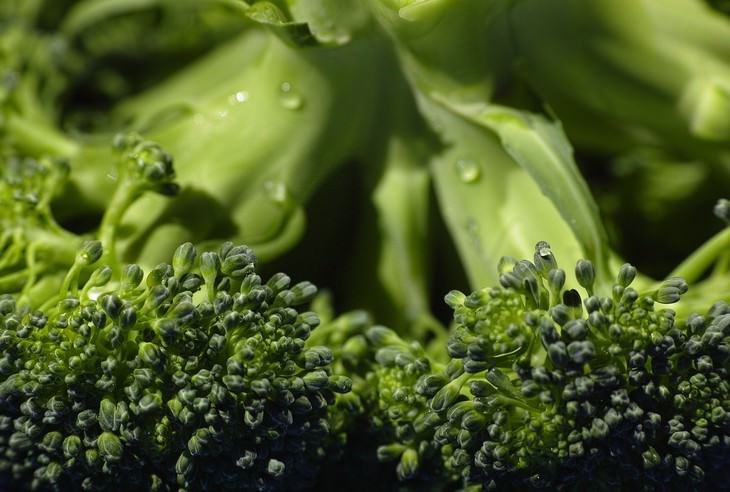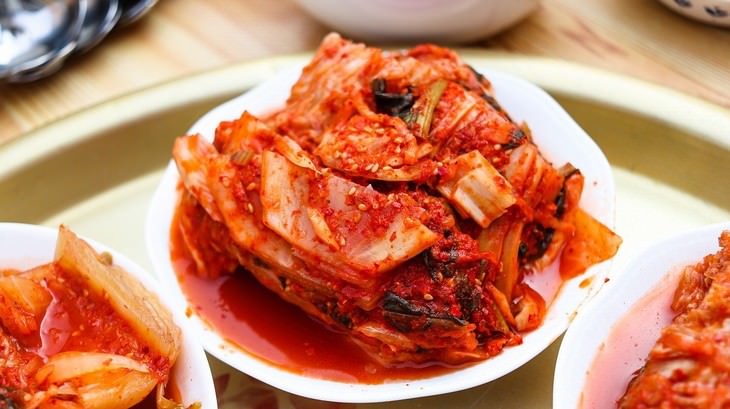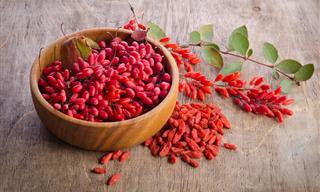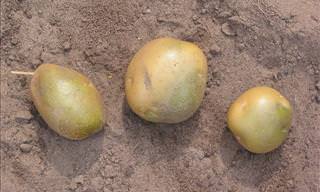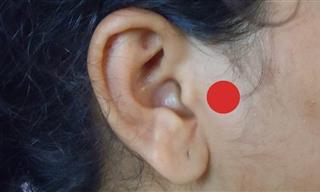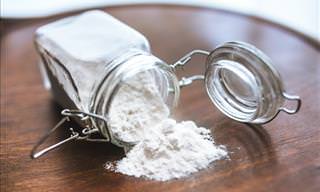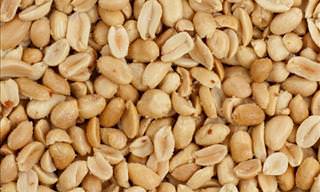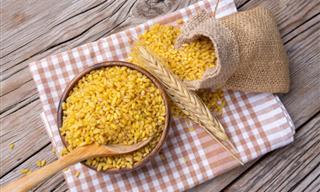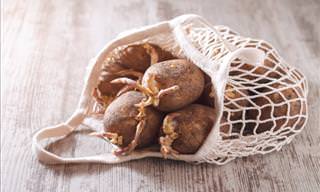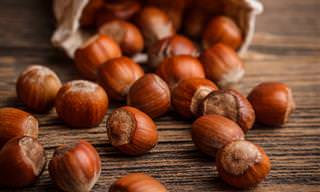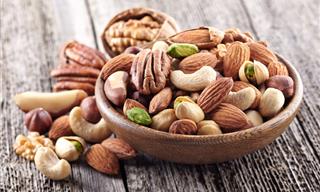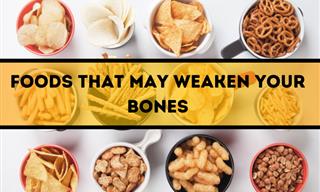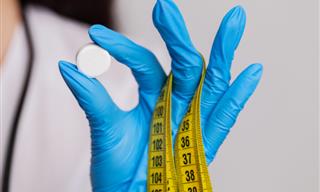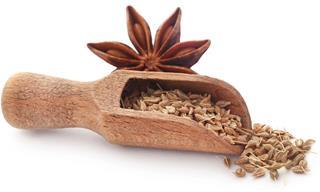1. Green Potatoes
The humble, delicious and nutritious potato can turn into your worst enemy. Few people know this, but the actual plant that produces potatoes is full of solanine and chaconine, both of which are poisonous substances the plant uses to protect itself from insects and parasites.
Typically, potato tubers are free of these substances, but in some cases, especially when exposed to prolonged sunlight, potatoes, too, can build up solanine. The telltale signs of potatoes containing the poison are:
- when the potato turns green
- a bitter taste.
Eating just a few of these green potatoes can make you develop toxic symptoms, such as vomiting, diarrhea, headaches, hallucinations, inflammation in the joints, cardiac dysrhythmia, thyroid issues, and other symptoms. Just 3-6 mg of solanine per kilogram of body weight can be deadly, so stay away from green or bitter-tasting potatoes.
2. Cherry Pits, Apple Seeds, and Peach Stones
Cherries, apples, peaches, and apricots are definitely among the most popular fruits out there, period. They're all juicy, sweet, and ridiculously easy to eat. But did you know that the seeds of all of these fruits are packed with prussic acid, also known as cyanide? The concentration of the potentially deadly poison varies significantly depending on the fruit, but only one cherry pit has been estimated to contain 0.17 grams of cyanide, which could be enough to kill a person.
Luckily, all of these fruits hide their poisonous insides deep within a hard shell, so there's generally no danger of you even ingesting an apple seed or cherry pit because your digestive system won't be able to dissolve the protective coating of the seed, given that you haven't bitten through it, that is. Still, we just wouldn't recommend risking it.
3. Bitter Almonds
Almonds are among the healthiest of nuts, but even they can be not so beneficial to your body, especially if you choose the wrong kind. This is because all almonds contain a precursor to cyanide called amygdalin, which can then be converted into the poison in your body.
Both sweet and bitter almonds contain amygdalin, but it's the bitter variety that has a significantly higher quantity of the poisonous substance and can cause diarrhea, nausea and stomach cramps, especially if they are raw. Heat treatment removes all the toxins from sweet almonds, so they're safe to eat.
4. Forest Mushrooms
It doesn't get better than a fresh homemade pizza with mushrooms, but be careful of which ones you use, as certain mushroom varieties can be deadly. As a matter of fact, there is only a handful of edible mushroom species. So, if you happen to go mushroom picking or buy fresh forest mushrooms, know very well which kinds of mushrooms are safe to eat and stay away from the rest.
The most dangerous mushroom varieties are the death cap (Amanita phalloides) and the destroying angel (Amanita virosa), pictured above. Eating any of these wild mushrooms will produce symptoms like diarrhea, intense thirst, abdominal pain, vomiting, liver failure, coma, and even death.
5. Shellfish
Shellfish are an exceptional source of protein and other beneficial nutrients, but unfortunately, it's not as safe to eat as fish, particularly when consumed raw. Even fresh seafood can absorb potentially harmful bacteria and viruses from the surrounding waters and cause serious digestive distress.
Apart from that, shellfish are notorious for absorbing high quantities of toxic heavy metals from the sea, such as mercury or cadmium, which ultimately build up in the human body and can cause toxic symptoms and even heavy metal poisoning, so it's best not to eat shellfish too often, even when cooked through thoroughly.
6. Raw Kidney Beans
Kidney beans are a great source of plant-based protein and iron, if you eat them right, that is. Non cooked beans can induce bad stomach cramps, vomiting, and diarrhea. That's why you should always cook your beans well before eating them, as the cooking process neutralizes the toxic proteins called lectins raw beans contain.
Raw kidney beans are the most saturated in lectins, but all beans have them. Eating just 4-5 kidney beans is typically enough to produce the above-mentioned symptoms, so make sure to eat your beans cooked.
7. Fresh Elderberries
Elderberry syrup or jam is a popular treat. It has known immune-boosting properties and it can be used to treat cold and flu symptoms, as well as relieve constipation.
However, eating just a few elderberries raw can have adverse effects on your health, as the berries contain cyanide and lectin. Even in small doses, these compounds induce digestive symptoms, such as nausea, diarrhea, and vomiting.
8. Raw Cashews
The cashews labeled as 'raw' you buy in stores aren’t actually raw at all, but if you happen to have access to real raw cashews, don't eat them. This is because all so-called raw cashews actually undergo a streaming process before they are packaged and shipped to stores, otherwise the nuts are actually toxic.
If not done so, cashews will contain a chemical called urushiol, which is the same allergen that's in poison ivy. Thus, eating truly raw cashews is extremely likely to cause a severe, potentially life-threatening allergic reaction.
9. Nutmeg
Nutmeg is a popular spice used both in sweet and savory dishes, as it imparts a pleasant nutty flavor to any recipe. Most recipes require no more than a teaspoon of the spice, and for good reason, as higher doses of nutmeg will make you regret using it for good. As a matter of fact, only 2 teaspoons of nutmeg powder can be toxic.
This is because the spice contains myristicin, a compound that messes with your brain and causes adverse symptoms like dizziness, confusion, drowsiness, hallucinations, and even seizures.
10. Alfalfa Sprouts
Alfalfa sprouts are typically grown in a warm, wet environment, which just so happens to be the optimal conditions for bacterial growth as well. So, it's no surprise that the sprouts are a common culprit behind foodborne illness outbreaks.
In fact, during the past 20 years, alfalfa sprouts have been responsible for thirty of such outbreaks, which included such dangerous pathogens as salmonella and E. coli. That's why we highly recommend boiling or otherwise exposing the sprouts to high heat before including them into your meal, even if you grow the sprouts at home.
11. Rhubarb Leaves
Rhubarb stalks are an excellent ingredient for compotes and desserts, but you have to know very well how to utilize them to stay safe. Before using the rhubarb, clean away all the leaves and throw them out, as the leaves contain a potentially deadly compound called oxalic acid.
Admittedly, one would have to eat a lot of rhubarb leaves, approximately 5 kg (11 lb), to die as a result, but even smaller amounts of the leaves can make you experience unpleasant symptoms, such as vomiting, diarrhea, breathing difficulties and burning in the mouth.
Consuming the leaves also makes you prone to kidney stones and abnormal blood clotting, as the poisonous substance binds to the calcium present in your body and causes a calcium deficiency, which then manifests itself in the above-mentioned symptoms.
12. Mango
Like cashews and poison ivy, the leaves and bark of mango trees, as well as the skin of mango fruit are full of urushiol. That's why people who just happen to bite into a mango or eat a piece of the skin often experience skin rashes and swelling, or even problems breathing.
The severity of your symptoms will depend on how allergic you are to urushiol, but it's best to just stay away from the bitter mango skin altogether and enjoy the sweat and juicy pulp of the fruit instead.
13. Broccoli
Didn't expect to see broccoli on this list, did you? Neither did we before we started researching for this article, but it turns out that even this superfood has its drawbacks if you eat it too much and too often. To prevent this from happening, simply switch out broccoli with other veggies from time to time, such as carrots or peppers in your salad or any other dish, especially if you have a history of thyroid issues.
This is because broccoli contains compounds called thiocyanates, which prevent your body from absorbing adequate amounts of iodine. If this happens constantly, it may lead to an underactive thyroid - hypothyroidism, a chronic issue that manifests itself in sudden weight gain, hair thinning, constipation, depression, and other symptoms.
14. Kimchi
Kimchi is among the healthiest fermented foods, with this Korean cabbage being capable of doing wonders for your digestive health, weight loss, aging and even prevent cancer. Still, even this wonder food has a dark side, believe it or not.
Namely, it's typically very high in sodium, with only 1 serving containing, on average, about a third of your allowed daily sodium intake. Higher than normal sodium intake, in turn, can really affect your heart and cardiovascular health in particular. However, in moderation, this fermented delight will share its health benefits with you without affecting your health, so make sure to eat no more than 1 serving of kimchi daily and you're golden.
15. Brown Rice
Brown rice is healthier than white rice and widely available, but it, too, can be disappointingly dangerous. This has nothing to do with the rice itself, but rather with the way it is grown. More specifically, rice is among those rare foods that are the most likely to absorb inorganic arsenic from the water and soil it's grown in, and because brown rice is less processed than white rice, it generally contains more of the toxic element.
Not all brown rice is polluted with arsenic, but in many corners of the Earth, the water supply is packed with the dangerous poison, which seeps into the rice as it's grown. Inorganic arsenic is one of the most toxic elements known, with long-term use being recognized to contribute to the development of various cancers, type 2 diabetes, and cardiovascular problems.
To minimize your exposure to arsenic, rinse your rice thoroughly several times before cooking and cook in plenty of water, subsequently draining the cooked rice. This will wash out up to 57% of the arsenic. You can also opt for white rice instead of brown, possibly from the Himalayan region (North India and Pakistan, Nepal), countries known to have less arsenic water pollution.
Related Articles:
 Go to BabaMail
Go to BabaMail


